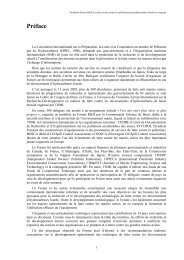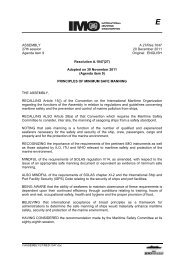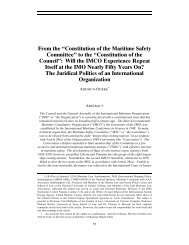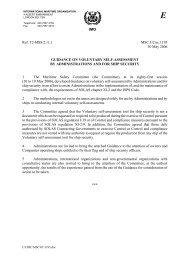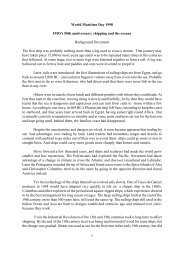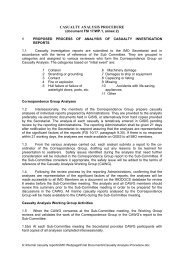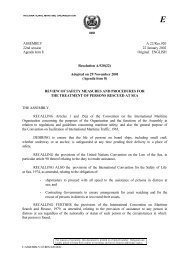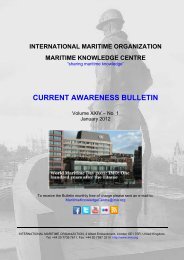Supplement: FSS Code - IMO
Supplement: FSS Code - IMO
Supplement: FSS Code - IMO
You also want an ePaper? Increase the reach of your titles
YUMPU automatically turns print PDFs into web optimized ePapers that Google loves.
2.4.2 Positioning of detectors<br />
2.4.2.1 Detectors shall be located for optimum performance. Positions near beams and<br />
ventilation ducts, or other positions where patterns of air flow could adversely affect<br />
performance, and positions where impact or physical damage is likely, shall be avoided.<br />
Detectors shall be located on the overhead at a minimum distance of 0.5 m away from<br />
bulkheads, except in corridors, lockers and stairways.<br />
2.4.2.2 The maximum spacing of detectors shall be in accordance with the table below:<br />
Type of<br />
detector<br />
Maximum floor area<br />
per detector (m 2 )<br />
Table 9.1 – Spacing of detectors<br />
Maximum distance<br />
apart between centres<br />
(m)<br />
Maximum distance away<br />
from bulkheads (m)<br />
Heat 37 9 4.5<br />
Smoke 74 11 5.5<br />
The Administration may require or permit other spacing based upon test data which<br />
demonstrate the characteristics of the detectors. Detectors located below moveable ro–ro<br />
decks shall be in accordance with the above.<br />
2.4.2.3 Detectors in stairways shall be located at least at the top level of the stair and at<br />
every second level beneath.<br />
2.4.2.4 When fire detectors are installed in freezers, drying rooms, saunas, parts of galleys<br />
used to heat food, laundries and other spaces where steam and fumes are produced, heat<br />
detectors may be used.<br />
2.4.2.5 Where a fixed fire detection and fire alarm system is required by regulation II-2/7.5<br />
of the Convention, spaces having little or no fire risk need not be fitted with detectors. Such<br />
spaces include void spaces with no storage of combustibles, private bathrooms, public<br />
toilets, fire-extinguishing medium storage rooms, cleaning gear lockers (in which flammable<br />
liquids are not stowed), open deck spaces and enclosed promenades having little or no fire<br />
risk and that are naturally ventilated by permanent openings.<br />
2.4.3 Arrangement of cables<br />
2.4.3.1 Cables which form part of the system shall be so arranged as to avoid galleys,<br />
machinery spaces of category A, and other enclosed spaces of high fire risk except where it<br />
is necessary to provide for fire detection or fire alarms in such spaces or to connect to the<br />
appropriate power supply.<br />
2.4.3.2 A section with individually identifiable capability shall be arranged so that it cannot<br />
be damaged at more than one point by a fire.<br />
2.5 System control requirements<br />
2.5.1 Visual and audible fire signals *<br />
2.5.1.1 The activation of any detector or manually operated call point shall initiate a visual<br />
and audible fire detection alarm signal at the control panel and indicating units. If the signals<br />
have not been acknowledged within 2 min, an audible fire alarm shall be automatically<br />
sounded throughout the crew accommodation and service spaces, control stations and<br />
* Refer to the <strong>Code</strong> on Alerts and Indicators, 2009, as adopted by the Organization by resolution A.1021(26).<br />
<strong>Supplement</strong> to the <strong>FSS</strong> <strong>Code</strong> (2007 Edition) 15




